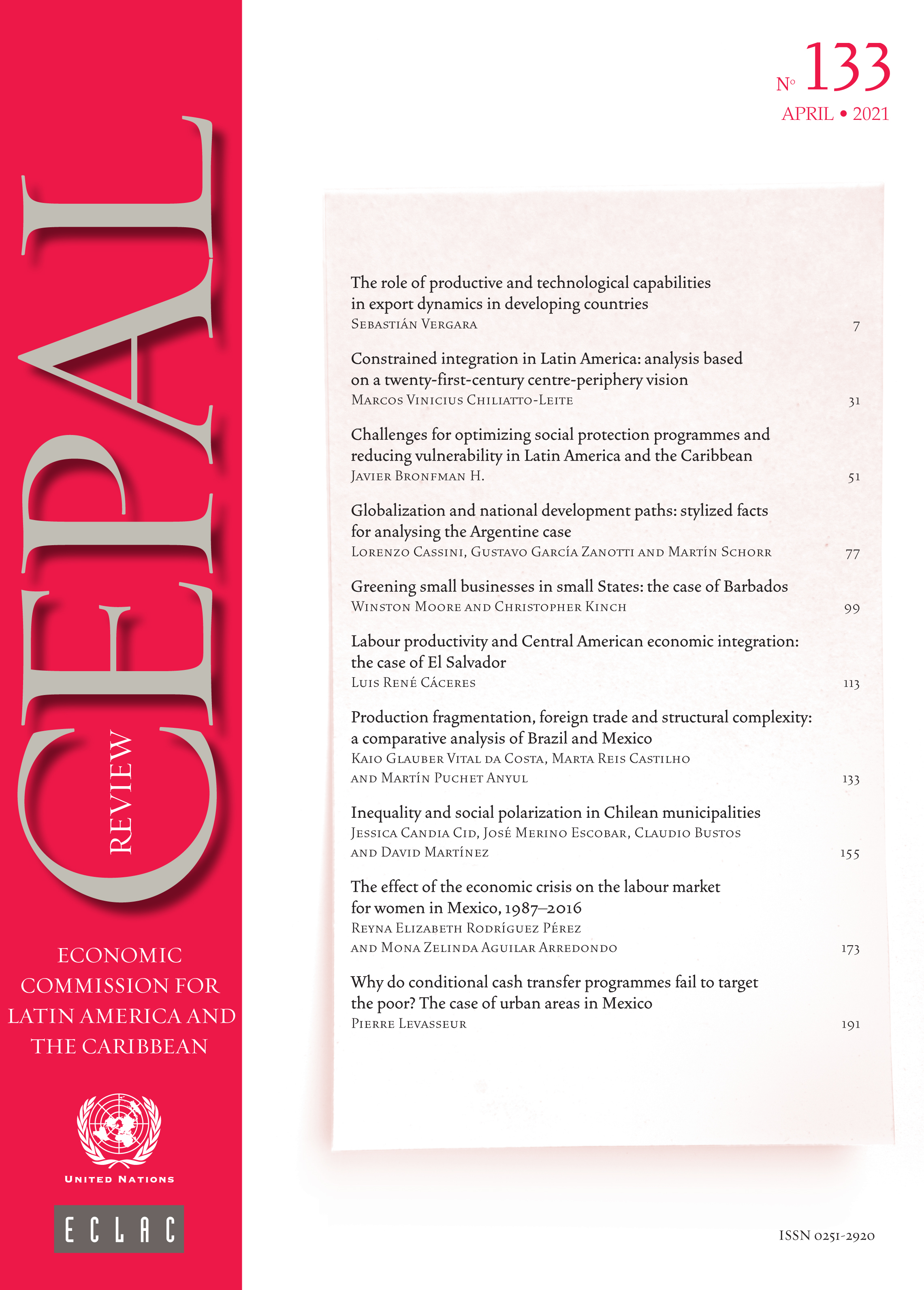-
Constrained integration in Latin America: Analysis based on a twenty-first-century centre-periphery vision
- Source: CEPAL Review, Volume 2021, Issue 133, Nov 2021, p. 31 - 50
- Spanish
-
- 02 Nov 2021
Abstract
The early twenty-first century in Latin America was characterized by a “pink tide”, in which a reorientation of national policies produced positive social outcomes and changed both the regional order and the role of regional integration in the different countries. Alongside this process, the international economy provided relief from the external constraint, which meant that growth paths were not interrupted by balance-of-payments crises. Nonetheless, the progress made in regional integration falls well short of political intentions. This article posits that major transformations occurring at the centre of the international economy prevented the region’s production structure from becoming more diversified. Unfortunately, as existing production structures were reproduced (or reprimarized), external engagement outside the region became deeper and Latin American integration remained constrained and confined to a secondary role.





